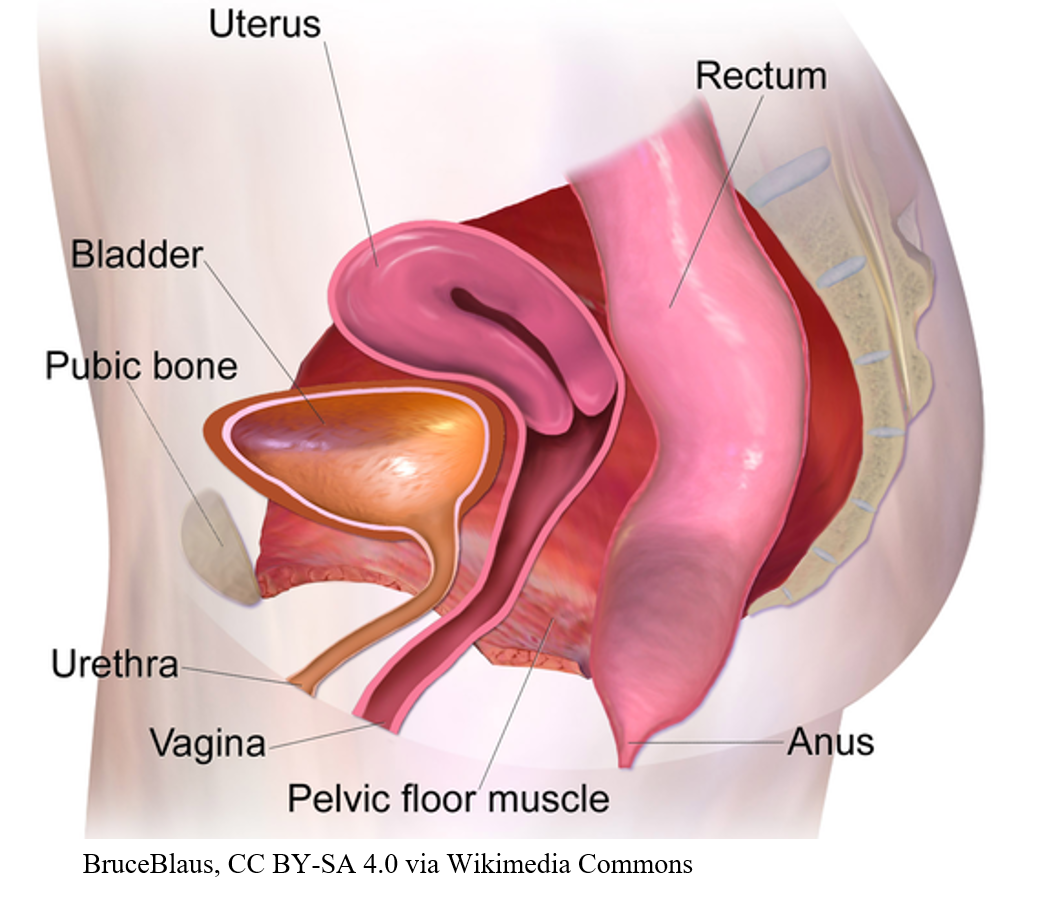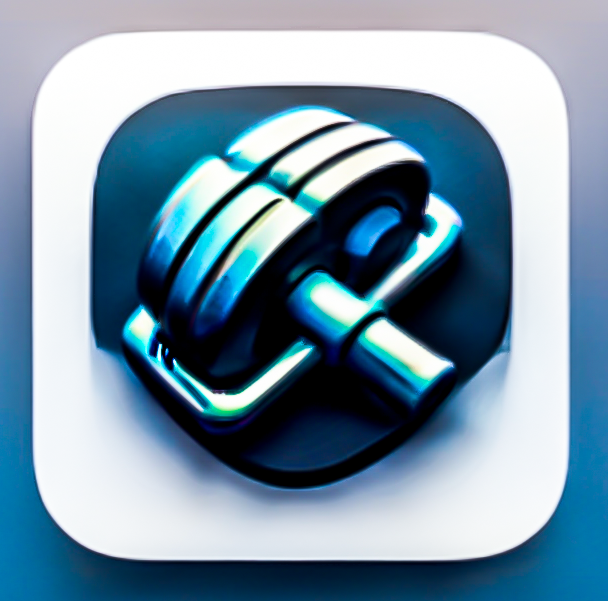What Is Pelvic Floor Muscle Training?

Ladies, have you ever accidentally leaked (urine) when you cough, sneeze, or do certain types of activities, such as lifting weights? Involuntary loss of urine in such instances is known as stress urinary incontinence or SUI. The first line of treatment is often pelvic floor muscle training, which is also known as Kegel exercises; but many women (and men!) don’t know where the pelvic floor is located nor what it looks like. Additionally, many wonder why pelvic floor muscle training is recommended for urine incontinence, because it is more known for helping women who have given birth and older women.
The pelvic floor lies in the base of the pelvic cavity. If you put your hands on your hips with arms akimbo, the bones you feel is the pelvis – which is made up of other bones as well (i.e., hip bones, sacrum, and coccyx). Together, these bones make up the pelvic cavity that houses some important organs (such as fallopian tubes, ovaries, uterus, bladder, proximal part of the urethra, the end part of the small intestine, and the rectum). So, one of the jobs of the pelvic floor is to support these organs, including organs that make up the urinary system. This means that the layers of muscles and connective tissues of the pelvic floor act as a support for the various organs to stay in their positions, providing stability, and preventing them from descending. The urethra, which is a hollow canal from the bladder to the opening in front of the vagina, carries and discharges urine. In coordination with the nervous system, the pelvic floor also assists the bladder and the urethra control urination, through contracting and relaxing mechanisms. When these mechanisms fail to function correctly, its ability to support continence is impaired. This is when pelvic floor muscle training may benefit.
Pelvic floor muscle training (better known as Kegels) is exercises that train muscles of the pelvic floor to lift, contract, hold, and relax in a timed sequence. A pelvic health physiotherapist can provide guidance for pelvic floor muscle training, however, the availability of mobile biofeedback devices with smartphone apps these days are a convenient option for women. The goals of training are to develop the ability to isolate and control contractions and relaxation of the pelvic floor muscles. One of the ways the devices do this is through visual feedback on the device itself or its accompanying app. Many devices on the market can be calibrated specifically for the user and offer several structured exercise programs that teach different patterns of contractions and relaxation aimed to achieve accuracy, intensity, endurance, strength, speed, and tonicity.
The pelvic floor is like other muscles. If it is exercised regularly and rehabilitated after injury, it will continue to support and assist the bladder and urethra to maintain continence.
We are conducting research on pelvic floor muscle training among female lifters. If you actively train in Olympic weightlifting, power lifting, or strongman events, join us in our research efforts by emailing us!
Why Is Research on Stress Urinary Incontinence among Female Lifters Necessary?
Hey there, amazing ladies who love lifting weights! Let’s talk about something that affects many of us but doesn’t get the attention it deserves – stress urinary incontinence, or SUI. Many people also call it dribbling urine, involuntary urination, or leaky bladder. You know, that accidental peeing that sometimes happens when we’re doing physical activities or even just laughing or sneezing. Well, guess what? We need more research on this specific issue, especially among women like us who lift heavy weights in sports.
Now, you might be wondering why research on SUI among female lifters is so important. Here’s the scoop: while there’s a good amount of research on SUI among women in general and in various activities, there’s very little focus on women who lift weights like us. And guess what? We don’t even have any studies that specifically look at the situation here in the UK. That’s where you come in. This research is essential because we want to dig deep, understand the problem better, and find solutions that are tailored to us strong and amazing ladies who lift.
By conducting this research, we’ll learn so much. We’ll analyse the data, uncover patterns, and ultimately find ways to address this issue. Think of it as a journey of exploration and problem-solving that never ends, which you can be involved. Your support and participation are instrumental in making a difference.
Imagine having reliable information that can help you and other women make informed decisions about your health and well-being. That’s what this research is all about. It’s not just about finding answers; it’s about empowering ourselves and our fellow lifters with knowledge that can improve our lives.
Together, we can shed light on this often-overlooked issue. We can break the silence and pave the way for better lifting. Your voice and experiences matter, and they can contribute to a greater understanding of SUI among female lifters.
So, let’s embark on this journey together! Let’s support research that focuses on our unique needs as women who lift weights. By doing so, we’ll create a stronger, healthier community and help others who face similar challenges. Your involvement can make a real difference, not just for yourself, but for countless other women who are waiting for someone to speak up and advocate for them.
Are you ready to be a part of this incredible journey? Let’s lift each other up, both in the gym and in research, as we strive to find solutions, share our findings, and empower women everywhere. Together, we can make a lasting impact and improve the lives of women who lift!
